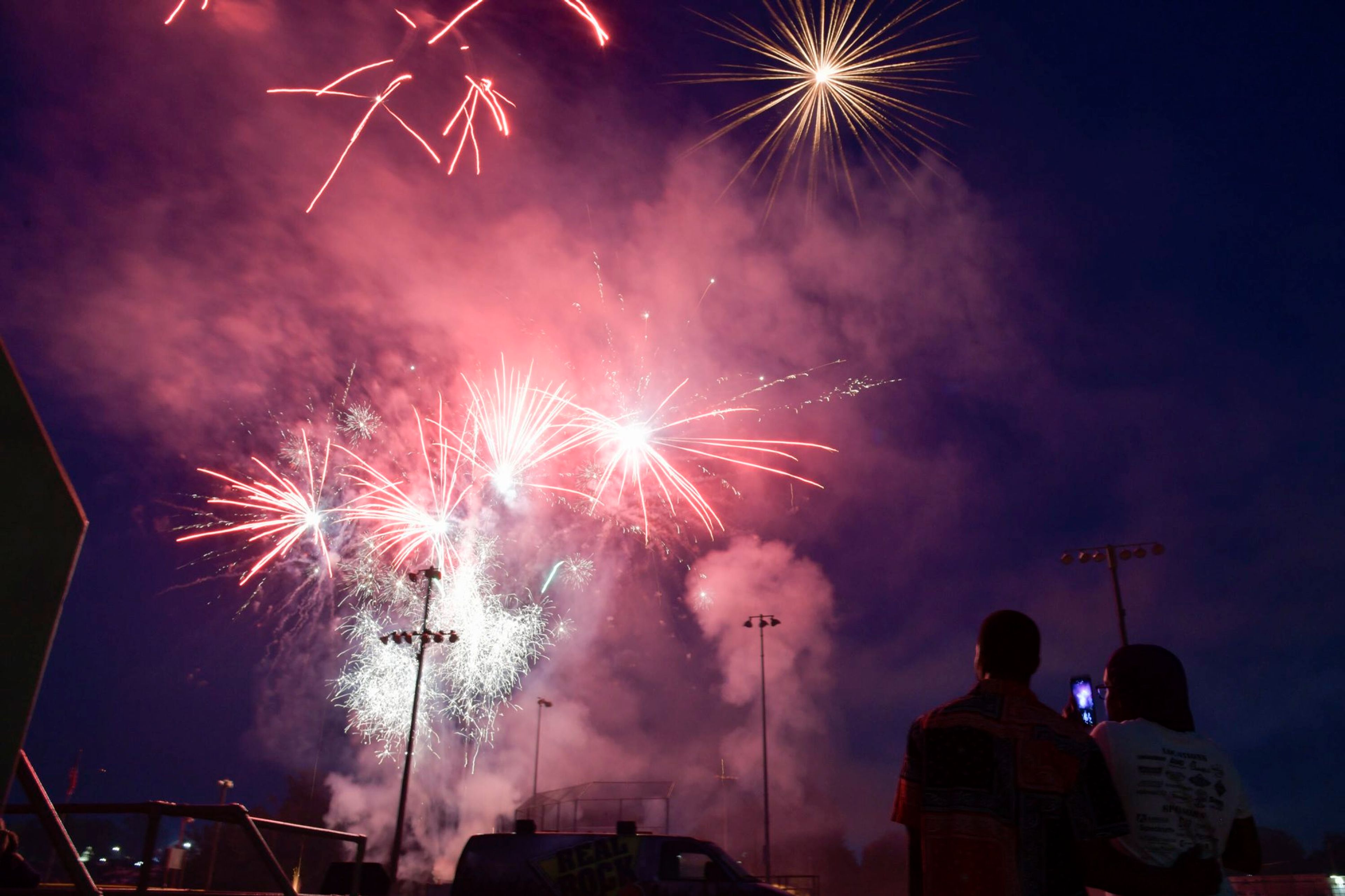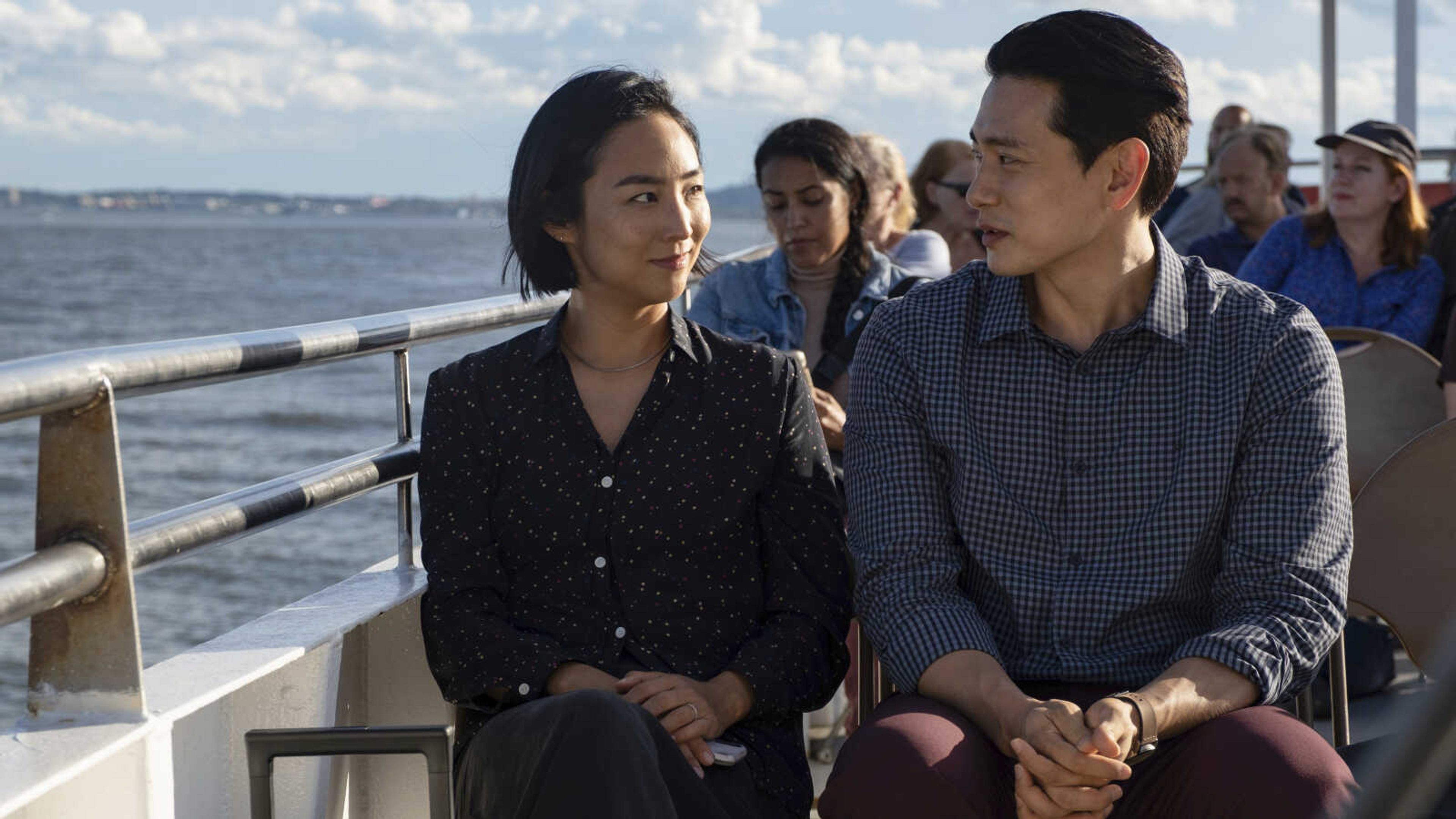Mississippi River Tales murals are rolling along
It has been seven weeks since work on the Mississippi River Tales murals began, and already Cape Girardeau's floodwall is coming to life with depictions of significant moments in the city's history. Seven murals are completed, but the ones depicting Meriwether Lewis and Bill Emerson were painted last year to coincide with the bridge's opening and the Lewis and Clark bicentennial...
It has been seven weeks since work on the Mississippi River Tales murals began, and already Cape Girardeau's floodwall is coming to life with depictions of significant moments in the city's history.
Seven murals are completed, but the ones depicting Meriwether Lewis and Bill Emerson were painted last year to coincide with the bridge's opening and the Lewis and Clark bicentennial.
The goal is to have all 24 of the murals finished by the beginning of fall.
According to the mural's designer, Chicago-based artist Thomas Melvin, meeting the proposed deadline should be no problem.
"It's been going very smooth," Melvin said of the painting process, which is actually ahead of schedule.
"I like to think about it as a book. It's a story of Cape Girardeau," he said of the murals.
People will be able to understand the story by reading the descriptions that will go along with each mural. A rail will erected to separate the sidewalk from the train tracks, and informational material will be attached to the rail, said Tim Blattner, president of the River Heritage Mural Association.
To those who want a heads up on what murals are completed and what they represent, the Southeast Missourian will provide weekly updates.
The murals that have been completed as of today:
Mural number 1: This mural depicts Cape Rock before the arrival of humans. Melvin said it shows "a very wide Mississippi and wildlife living comfortably in their habitat." It prominently features several, colorful Carolina Parakeets, which are now extinct but were once abundant in the area. The last bird died in captivity in Florida in 1910, Melvin said.
Mural number 2: This mural is showing the area around 900 A.D. and is devoted to the Mississippean Culture, a term anthropologists and archeologists use to describe a native culture that thrived from around 900 A.D. to the 16th century. Tribes in this culture constructed mounds for housing and ceremonial purposes, some of which can still be seen in Southeast Missouri. "It was a huge culture," Melvin said.
In between the second and third mural is the image of Hernando de Soto, a 16th century Spanish explorer who led the first European expedition to reach the Mississippi River. He actually began his exploration in Florida in 1539, on the search for gold, not the river. The group came across the river in 1541 and explored an area of it, but there is no proof he made it as far north as present-day Cape Girardeau. He died of fever in 1542. Melvin said the image of de Soto is painted in a different style because "we were looking for a little relief from realism and the stone work tying everything together."
Mural number 3: This mural, dated 1673, shows Jacques Marquette taking off for a trip down the Mississippi River, despite warnings of members of the Ottawa tribe in Wisconsin that things would become more dangerous the further south he traveled. Marquette was a French explorer and Roman Catholic missionary who joined French-Canadian explorer Louis Joliet on a trip down the river. The men got as far as the Arkansas River when they turned back and headed north all the way to Lake Michigan.
Mural number 4: This mural shows the Giradot trading post that was located north of Cape Rock and overlooking the Mississippi River. The figure gesturing with his arm is Jean Baptiste Giradot, a Frenchman who set up a trading post in the city in the 1730s. Melvin said this mural shows the rough characters that were around in the early days of what is now Cape Girardeau.
Mural number 5: This mural depicts Louis Lorimer on the right and Barthelemi Cousin in 1793 as they talk about land grants and decide how to distribute land. Lorimer was sent to Cape Girardeau by the Spanish government to establish a military post and was granted rights to develop and settle the land. Cousin was an engineer and surveyor who platted the town of Cape Girardeau. The post grew under Lorimer and in 1806 he donated four acres of land to establish a seat of justice. Two years later, Cape Girardeau became a city. In the back of the mural, Lorimer's house, now known as the Red House, can be seen.
Mural number 6: Lorimer is again featured on a mural, this time the year is 1803 and he is greeting Meriwether Lewis. Lewis and William Clark passed through Cape Girardeau in November 1803 and caught Lorimer while he was at a horse race. Lewis described his visit to the city in his journals and described Lorimer in detail, including his long, dark hair that was long enough to touch the ground.
kalfisi@semissourian.com
335-6611, extension 182
Connect with the Southeast Missourian Newsroom:
For corrections to this story or other insights for the editor, click here. To submit a letter to the editor, click here. To learn about the Southeast Missourian’s AI Policy, click here.









